And now for the employment report. Here's the thing with these big reports. Traders have to get two things right to successfully trade the report. First, you have to guess the non-farm payroll number. Second, you have to guess the market's reaction. The report can be better-than-expected or worse-than-expected. The stock market reaction can be positive or negative. We could also see a benign number and a muted reaction. Should the number be worse-than-expected, stocks could open lower and then rebound on the hopes the quantitative easing will continue at its present rate. Should the number be better-than-expected, stocks could open higher and then fade as the market prices in the end of quantitative easing. Whatever happens, the financial media will find a reason that fits the price move. Think I will focus on the charts and trends. Stocks are still in corrective mode with short-term downtrends. We got bounces on Thursday afternoon as traders bought into short-term oversold conditions and support levels, but these were not enough to reverse the short-term downtrends. The charts below show the AD Line and AD Volume Line for the S&P 500 in downtrends.
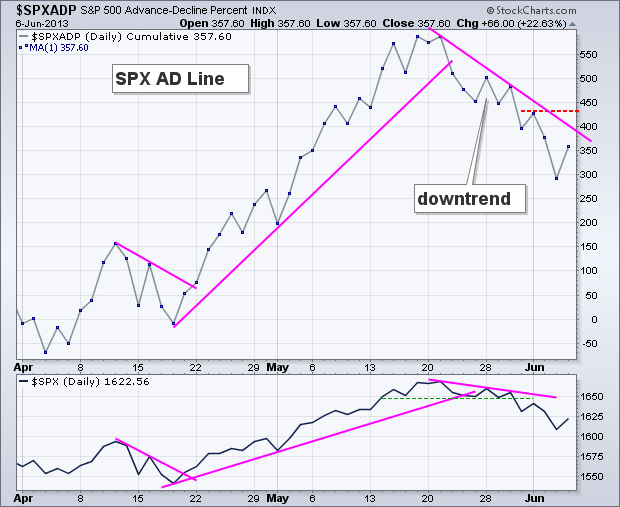
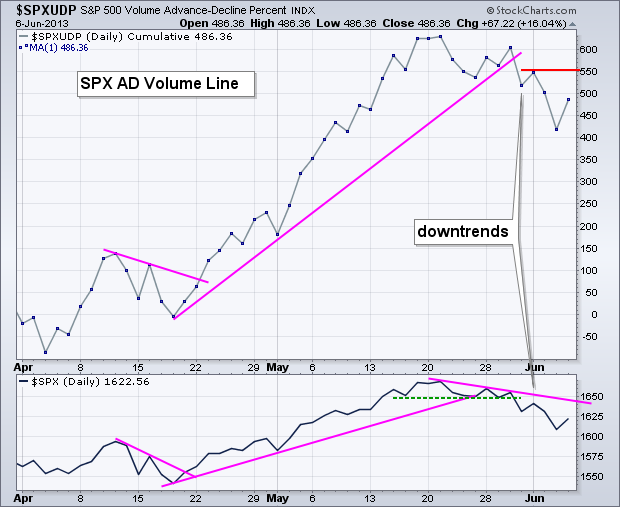


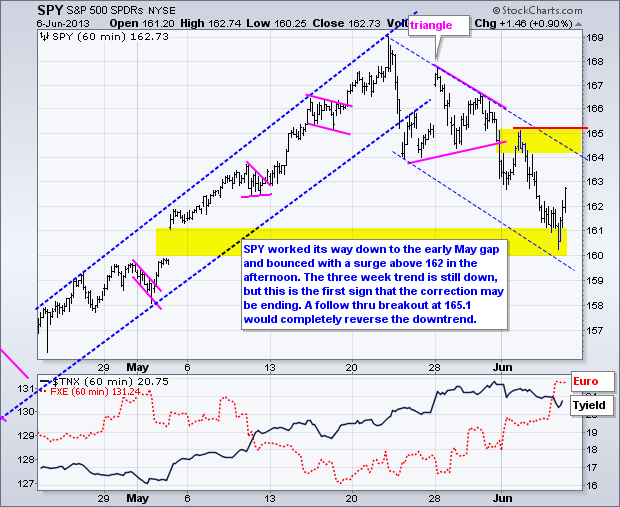
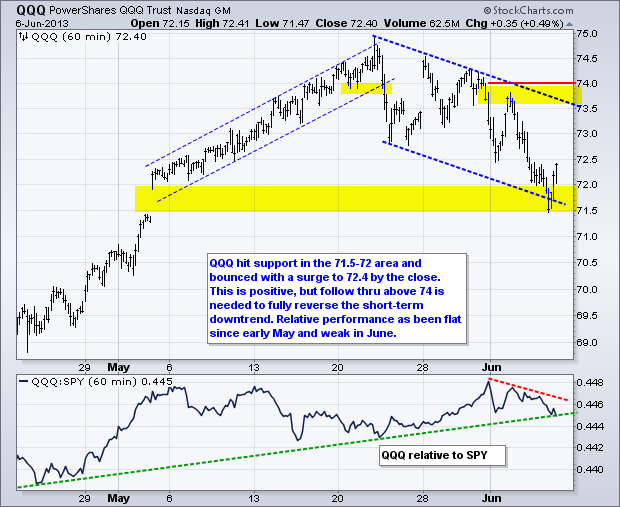
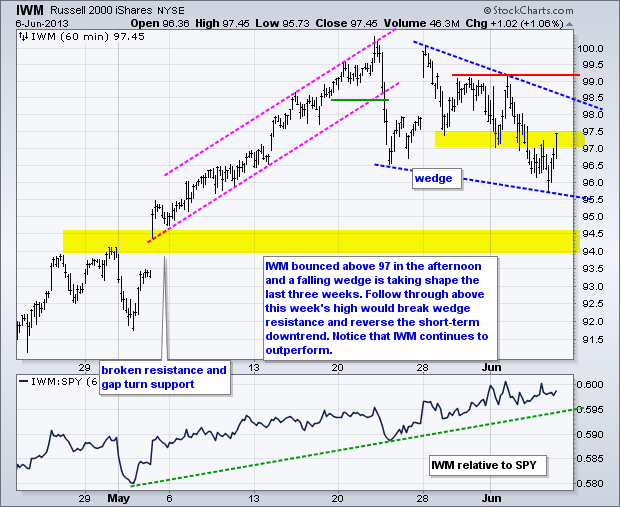
**************************************************************************
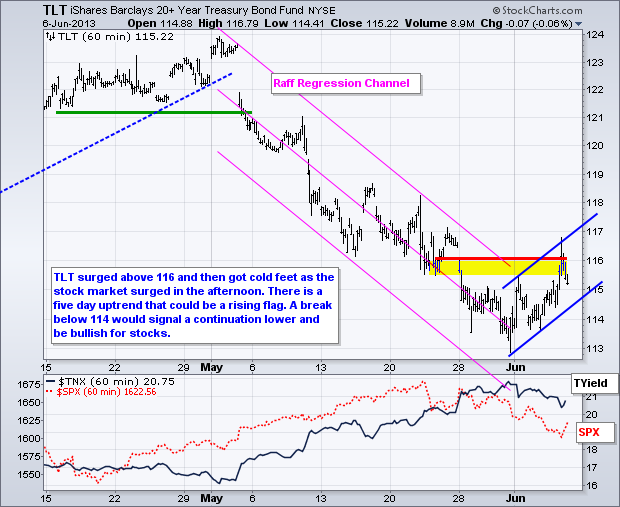
**************************************************************************
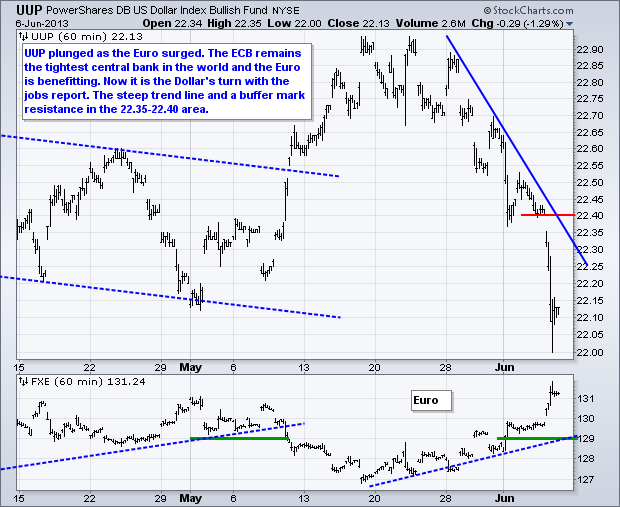
**************************************************************************

**************************************************************************

**************************************************************************
Key Reports and Events (all times Eastern):
Fri - Jun 07 - 08:30 - Nonfarm Payrolls
Charts of Interest: Tuesday and Thursday
This commentary and charts-of-interest are designed to stimulate thinking. This analysis is
not a recommendation to buy, sell, hold or sell short any security (stock ETF or otherwise).
We all need to think for ourselves when it comes to trading our own accounts. First, it is
the only way to really learn. Second, we are the only ones responsible for our decisions.
Think of these charts as food for further analysis. Before making a trade, it is important
to have a plan. Plan the trade and trade the plan. Among other things, this includes setting
a trigger level, a target area and a stop-loss level. It is also important to plan for three
possible price movements: advance, decline or sideways. Have a plan for all three scenarios
BEFORE making the trade. Consider possible holding times. And finally, look at overall market
conditions and sector/industry performance.

About the author:
Arthur Hill, CMT, is the Chief Technical Strategist at TrendInvestorPro.com. Focusing predominantly on US equities and ETFs, his systematic approach of identifying trend, finding signals within the trend, and setting key price levels has made him an esteemed market technician. Arthur has written articles for numerous financial publications including Barrons and Stocks & Commodities Magazine. In addition to his Chartered Market Technician (CMT) designation, he holds an MBA from the Cass Business School at City University in London.
Learn More





